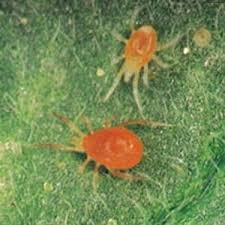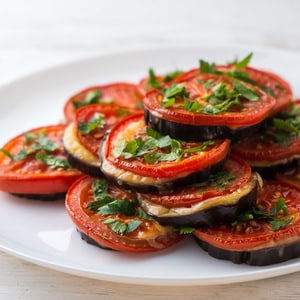Early ripening and heat-loving eggplant “Vera” from domestic breeders
Eggplant Vera is widespread among gardeners in Russia and neighboring countries. This vegetable has remarkable taste and external characteristics and contains a lot of useful and necessary elements for the body.
In the article we will look at what the culture is, and we will analyze in detail the characteristics and description of the variety.
Description of the variety
The Vera variety appeared at the end of the twentieth century. Eggplant is intended for growing in private gardens and personal plots. It performs well in the Urals, Siberia and the Far Eastern District.
Distinctive features
 The early ripening variety ripens within 100-120 days from planting. It is grown in open ground or in a greenhouse. To obtain the best harvest, summer residents grow the variety in seedlings. It is unpretentious in care and requires a minimum of attention.
The early ripening variety ripens within 100-120 days from planting. It is grown in open ground or in a greenhouse. To obtain the best harvest, summer residents grow the variety in seedlings. It is unpretentious in care and requires a minimum of attention.
Characteristics
The bushes are compact, reaching a height of 70-75 cm. The leaves are medium in size, green with a purple tint.
Pear-shaped, purple color. The pulp is dense, white, without bitterness.
The length of one fruit is about 20 cm, weight is from 150 to 300 g. From 1 sq. m, gardeners harvest from 1.5 to 3 kg of vegetables.
Interesting! The ancient Greeks were convinced that eggplants were harmful and even dangerous to health. The purple fruit was called the “apple of madness” and they were sure that the vegetable took away a person’s sanity.
How to grow this variety yourself
The best vegetables are grown in our own garden. Eggplants are loved by both experienced gardeners and novice gardeners.How to grow the Vera variety tasty and healthy?
Growing seedlings
Seedlings are grown in prepared soil. The soil should be clean and nutritious, free of debris and weeds. It is best to take soil from the garden and disinfect it by placing it in the oven for 1 hour. High temperatures will kill dangerous germs and help prevent fungi and infections in the future.
In addition to the soil, prepare a container. Grow seedlings in any clean and dry container, for example, in plastic cups, flower pots, plastic boxes.
High-quality seeds are selected for planting. Selection is carried out using a jar of water in which the seeds are placed. The water is stirred clockwise. Those seeds that have sunk to the bottom are suitable for seedlings. Next, the seeds are disinfected with Bordeaux mixture and dried thoroughly.
Place soil in a container and make holes at a distance of 10 cm from each other. Place 2-3 seeds in each, sprinkle earth on top and water generously.
The seedlings are placed in heat. The next watering after planting is carried out a week later. Make sure that the soil does not dry out and is not too wet. After 2 weeks, fertilize the eggplants with liquid bird droppings.
The optimal temperature for seedlings is 20 degrees, air humidity is 80-85%. Eggplants need a lot of light, so gardeners provide them with additional lighting with fluorescent lamps.
Transfer
Seedlings are planted in the garden at the end of May. A week before planting, gardeners prepare beds measuring 30x100 cm. The soil is well moistened and fresh manure is added. Place the sprouts in open ground carefully so as not to damage the still weak roots.
The distance between bushes should be at least 40 cm.To prevent the plants from freezing, they are covered with a thin film, which is completely removed in mid-late June. After transplanting, the eggplants are watered with settled water. 0.5 liters are consumed per bush.
Further care
Water Vera eggplants so that the soil is constantly slightly moist. The water is heated in the sun and poured directly under the root. After each watering, the beds are loosened between the rows. Once a week, instead of ordinary water, use an infusion of nettle or onion peel. Folk remedies not only moisten the beds, but also have a preventive effect and increase the plant’s immunity.
Eggplants love mineral fertilizers. The first fertilizing is applied 15 days from the moment the seedlings are transplanted into open ground. Gardeners use Apion or Kimira. The drugs improve the taste of fruits, increase productivity and protect the plant from pests. In addition to mineral fertilizers, eggplants are fed three times a season with ash, manure or humus.
Important! When using mineral fertilizers, follow the dosage and manufacturer's recommendations. Violation of the rules can lead to the death of plants.
Features of cultivation and possible difficulties
When growing Vera eggplants, many gardeners are faced with the problem of boron deficiency. If there is a lack of boron in eggplants, side shoots develop rapidly, the leaves become pale green and weak. Flowers fall off and there is no flowering. Mineral fertilizers, which contain the missing element, help solve the problem. Summer residents spray eggplant beds with boric acid (1 g of acid is required per 10 liters of water).
In addition to boron, eggplants often need potassium supplements. A sign of potassium deficiency - light spots on the fruits, while the leaves dry out and acquire a yellow tint. It is recommended to feed eggplants with potassium using dry wood ash. It has a positive effect on both eggplant and the quality and nutritional properties of the soil.
Diseases and pests
They often live in garden beds spider mites. These dangerous little insects settle on the leaves, weave their transparent web, suck nutritious juices from the plant and disrupt metabolism. Ticks appear in garden beds due to improper care and contaminated soil.
Spraying with whey helps get rid of them. The method is effective and safe for human health. In addition to ticks, you can also find mole crickets and wireworms in the garden beds. Bordeaux mixture or copper sulfate solution helps in the fight against them.
Among the diseases, eggplants are attacked by the well-known fungus late blight. Fungal spores penetrate the plant stem through stomata. Favorable conditions for the spread of spores are hot and humid summers.
To combat the fungus, gardeners use the drug “Oxychom” or ash. In addition to late blight, eggplants suffer from mosaic disease. The virus appears as a yellow pattern on the leaves. Fitosporin is used against mosaic.
Harvesting and application
 The Vera variety is harvested at the end of August. It is not advisable to keep the fruits in the garden for too long, as over time they lose their elasticity, and the pulp will become bitter and watery.
The Vera variety is harvested at the end of August. It is not advisable to keep the fruits in the garden for too long, as over time they lose their elasticity, and the pulp will become bitter and watery.
The fruits are carefully cut off along with the stalk, wiped with a dry cloth and placed in wooden boxes. It is not recommended to store eggplants for a long time; it is better to process them within one month from the date of collection.
Eggplants make delicious and healthy savory snacks, vegetable salads and side dishes.Eggplants are stuffed with meat or poultry - such a dish will decorate any holiday table.
Due to its low calorie content, the vegetable is suitable for those who watch their figure and adhere to proper nutrition. Eggplant makes an excellent puree soup and harmless pate or caviar.
Interesting! Doctors recommend eating eggplant for those who want to quit smoking. The fact is that the vegetable contains nicotinic acid.
Housewives also use the product for cosmetic purposes. For example, they make nourishing and rejuvenating face masks. The eggplant pulp is grated and applied to the face for 20 minutes. The procedure moisturizes the skin and stimulates metabolic processes. In addition, eggplant rings are placed on the eyelids to reduce puffiness.
Advantages and disadvantages of the variety
The Vera variety is ideal for gardeners from regions with unpredictable climatic conditions. An early ripening vegetable will not keep you waiting long and will delight you with the first harvest in 2.5 months.
The commercial qualities of the variety are excellent; the purple glossy color looks appetizing and attractive. The taste is without bitterness, pleasant. The vegetable is universal and goes well with fish, meat, and other vegetables. Suitable for canning and pickling.
The variety has only one drawback: it shows average yield. Many other early ripening varieties have a richer harvest.
Read also:
Do you need to peel eggplants and how to do it correctly.
Review of the Nutcracker eggplant variety: advantages and disadvantages.
Reviews from gardeners
Gardener forums are full of reviews about the popular and tasty variety Vera. What do experienced gardeners say about the vegetable?
Nikita, Chelyabinsk: “I love eggplants because they are easy to care for and have a healthy composition. Of all the varieties, I like Vera the most. Eggplants have a bizarre shape and tasty pulp. I use the vegetable both in cooking and for preservation.”
Maria, Sochi: “Vera planted eggplant for the first time. I was pleased with the harvest. The return is friendly, all the fruits are smooth and glossy. As a raw foodist, I consume fruits only fresh. The taste is pleasant, not bitter."
Alexandra, Moscow: “Vera planted eggplants with seeds in open ground. Perhaps that is why the harvest turned out to be meager. Although the fruits are tasty, they are very few. I won’t plant this variety again.”
Conclusion
The purple color and interesting taste of Vera eggplants attracts the attention of many summer residents. It’s easy to grow the variety; the main thing is to follow the watering and fertilizing regime. Please note that it is recommended to harvest exactly on time.
Harvesting later will only harm your health, as the vegetables will become limp and tasteless. Eggplants make excellent dishes: caviar, salads, canned food, and even sweet and spicy snacks.